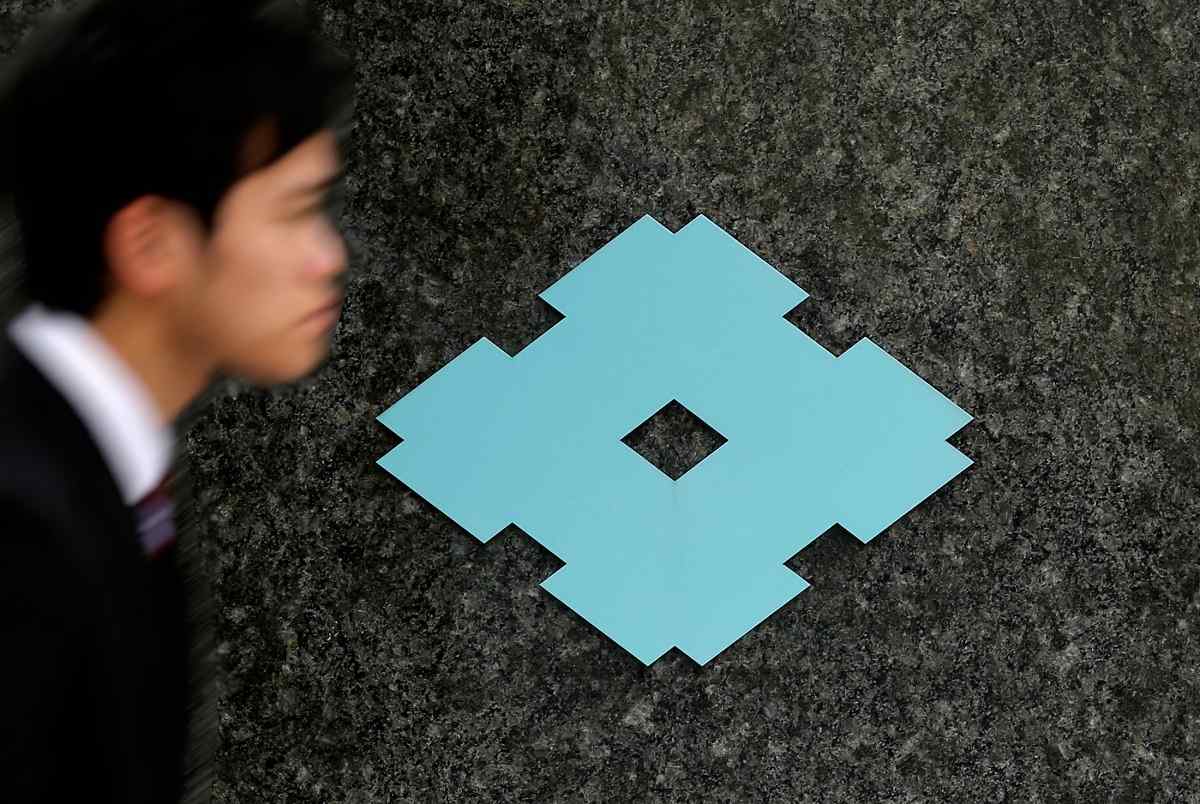
A man walks past the logo of Sumitomo Corp outside the company headquarters in Tokyo, Japan, May 9, 2016.
12:18 JST, June 6, 2024
TOKYO (Reuters) – Sumitomo Corp aims to install 500 megawatts (MW) or more of battery storage in Japan by March 2031, from 9 MW now, to help mitigate renewable energy fluctuations and improve the efficiency of the energy system, a company official said.
As resource-poor Japan expands renewable energy to meet decarbonisation goals and enhance energy security, battery usage is expected to rise to smooth out the intermittent supply of solar and wind energy.
Sumitomo’s battery storage initiative is part of the Japanese trading house’s broader efforts to bolster its energy transformation business.
“We aim to contribute to the stabilization and decarbonisation of the electricity system by developing and operating large battery storages,” Shigenobu Hamada, head of Sumitomo’s energy storage business unit, told reporters.
“Our goal is to develop a competitive battery storage business by leveraging our proprietary operational systems,” he said on Wednesday, adding that Sumitomo is also looking to invest in the business abroad.
Sumitomo expects Japan’s local battery storage capacity to grow from 2 gigawatt hours (GWh) in 2023 to 40 GWh by 2030, while global capacity is anticipated to expand from 190 GWh to 2,206 GWh.
Battery storage is expanding rapidly worldwide, led by China and the United States, but Japan lags due to smaller price differences in the wholesale electricity market, making it hard for storage developers to generate profits, Sumitomo said.
But the Japanese market will likely take off on the back of government support and institutional changes such as the development of a market for adjusting electricity supply and demand, the company said.
Sumitomo has so far installed three energy storage facilities, including 6 MW at Chitose in the northern island of Hokkaido, near where chipmaker Rapidus plans to build a plant.
The trading company plans to select suitable sites from potential locations with a capacity of 1,700 MW to add battery storage.
In Japan, as renewable energy deployment expands, output controls by utilities to balance power supply and demand have become more frequent nationwide, wasting potential clean energy that could otherwise be utilized.
"News Services" POPULAR ARTICLE
-

American Playwright Jeremy O. Harris Arrested in Japan on Alleged Drug Smuggling
-

Japan’s Nikkei Stock Average as JGB Yields, Yen Rise on Rate-Hike Bets
-

Japan’s Nikkei Stock Average Licks Wounds after Selloff Sparked by BOJ Hike Bets (UPDATE 1)
-

Japanese Bond Yields Zoom, Stocks Slide as Rate Hike Looms
-

Japan’s Nikkei Stock Average Buoyed by Stable Yen; SoftBank’s Slide Caps Gains (UPDATE 1)
JN ACCESS RANKING
-

Keidanren Chairman Yoshinobu Tsutsui Visits Kashiwazaki-Kariwa Nuclear Power Plant; Inspects New Emergency Safety System
-

Imports of Rare Earths from China Facing Delays, May Be Caused by Deterioration of Japan-China Relations
-

University of Tokyo Professor Discusses Japanese Economic Security in Interview Ahead of Forum
-

Japan Pulls out of Vietnam Nuclear Project, Complicating Hanoi’s Power Plans
-

Govt Aims to Expand NISA Program Lineup, Abolish Age Restriction























